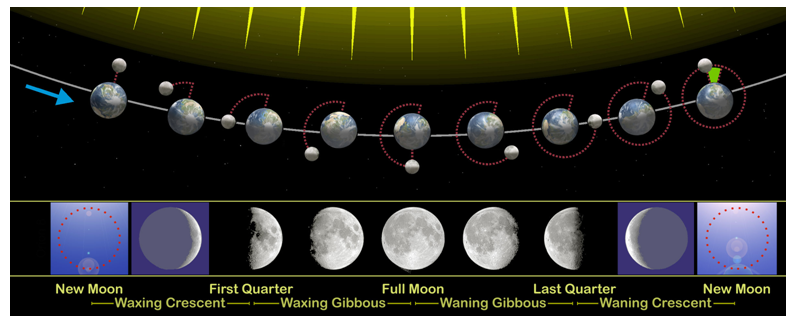1.9 Lunar Phases
Pre-Lecture Reading 1.9
-
•Astronomy Today, 8th Edition (Chaisson & McMillan)
-
•Astronomy Today, 7th Edition (Chaisson & McMillan)
-
•Astronomy Today, 6th Edition (Chaisson & McMillan)
Video Lecture
-
•Lunar Phases (10:12)
Supplementary Notes
Phase Determinants
-
•Direction of illumination
-
•Direction of viewing
Phases

Figure 1: Lunar Phases
-
•Note: Phase determinants and phases apply to any illuminated object, not just the moon.
Exercises
-
•Experiment with UNL's Basketball Phases Simulator.
-
•Experiment with UNL's Three Views Simulator.
-
•Experiment with UNL's Lunar Phases Simulator.
-
•Experiment with UNL's Lunar Phase Vocabulary.
-
•Experiment with UNL's Moon Phases with Bisectors.
-
•Experiment with UNL's Lunar Phase Quizzer.
-
•Experiment with UNL's Moon Phases and the Horizon Diagram.
-
•Each clear evening between new moon and full moon, find the moon in the sky around sunset. Using this worksheet, sketch the phase of the moon and from it draw an arrow to indicate the direction to the sun. Label the phase of the moon. Finally, estimate the moon's angle from the sun: 0° corresponds to in front of the sun in the western sky; 180° corresponds to opposite the sun in the eastern sky. Do not simply look up the answers on the internet! The point of this exercise is to see these trends with your own eyes.
